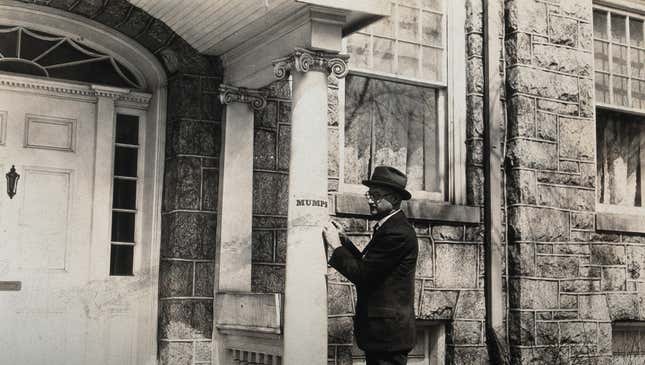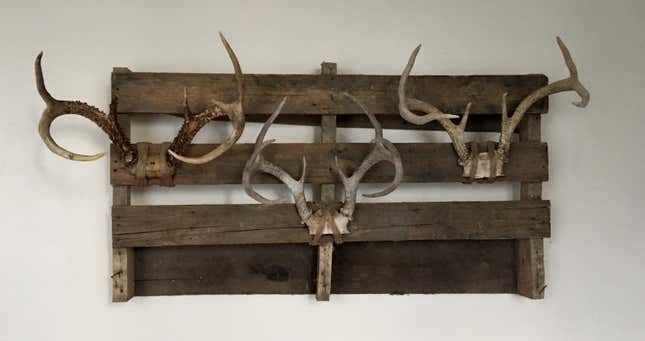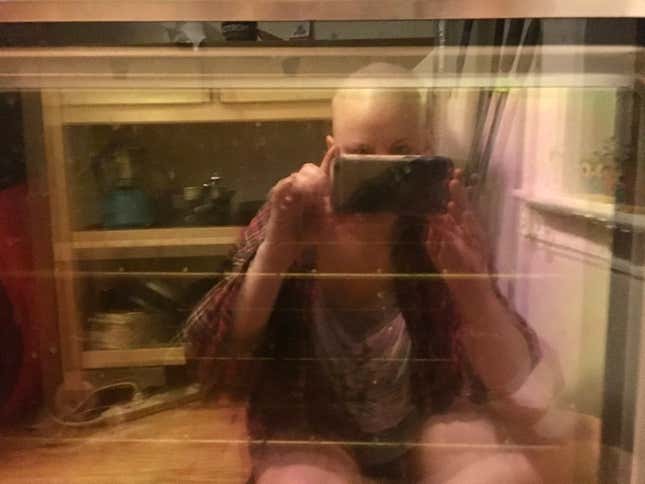The Solitude of Self-Quarantine Is Both Terrifying and Lovely
In Depth
Image: Wellcome Collection
In the summer of 2016, I had my cancerous tits cut off and began six rounds of chemo to catch any stray illness my body might still be secretly housing. Because chemotherapy works by killing perfectly good white blood cells along with the cancerous ones, the chance of getting seriously sick from a typically mild virus skyrockets. To combat this, my doctor prescribed a self-injected white blood cell booster called Neulasta, with the warning that it “might cause a little bone pain.” What it caused was 12 hours of torment I’ve yet to recover from and still cannot adequately describe. Every bone in my body felt as if it contained a lit match, and the fire pulsed outward, biting at the inside of skin that seemed seconds away from bursting open. Simultaneously, my ribs felt as if they had collapsed inward to squeeze my lungs so that I was no longer doing what I would define as “breathing” as much as I was letting breath escape in short rattles. My legs stopped working on my way from the couch to the bed, so I crawled for several minutes before giving up and lying spread eagle in the hallway, whispering “please” to no one as my dog whimpered in sympathy beside me. I’m crying now, four years later, from the remembering required of my attempt to explain.
When I told my doctor about what she labeled “some pain,” the suggestion was to take a Benadryl with the next injection. Instead, I decided to stay inside for the next two months of chemotherapy in self-quarantine, watching the world through my window and finding the solitude both terrifying and lovely.
Right now, the U.S. government is asking people to self-quarantine if they pose a risk of infecting others but haven’t tested positive for coronavirus. A self-quarantine isn’t anything like the pure isolation of medical quarantine, attended by suited professionals and often leaving sick people isolated in small, solitary rooms. Self-quarantine means sticking out what the Centers for Disease Control says is a 14-day incubation period within one’s own home and limiting contact with the outside world. This incubation period is a game of wait-and-see, where the prize is nothing happening.
But the waiting plays tricks, creating a fine line between sickness and imaginary malaise, during which a sneeze becomes mors vibrabit, and a toothache sets one googling how to smuggle ashes on an airplane and texting friends tips for clandestinely spreading human remains in the Gardens of Versailles.
The waiting plays tricks, creating a fine line between sickness and imaginary malaise
Dying in the head before the body catches up isn’t a new notion. Fifteenth-century plague treatises warned that the Black Death started in the mind, long before it started in the body: “Simply thinking about the plague makes one infected,” one such treatise read.
But dead-bolted inside 900 square feet of my Brooklyn apartment, there wasn’t much to do but stand in front of a mirror, swallowing the light from my cellphone and inspecting my throat for redness, or periodically testing out a little cough to see if it sounded wet enough to call someone. My father hates hypochondriacs, and when I was a child, he often instructed me to “stop that fake coughing,” leaving me always unsure of which illnesses were real and which were performed, never quite knowing where the line was between wanting attention and requiring it. But during my self-quarantine, I was sick: I had cancer, and real medical doctors wanted frequent reports of any sign of illness, which they promised to sort as real or imagined on my behalf.
In 1636, the Privy Council issued orders concerning a plague outbreak to the mayor and alderman of London: “the Master of euery house, assoone as any one in his house complaineth, either of Botch, or Purple, or Swelling . . . shall giue knowledge thereof to the Examiner of health within two houres after the said signe shall appeare.”
One day I found a red bump on the inside of my arm. It itched a little and burned some. I’ve had shingles before, down my spine when I was 10, and thought I remembered the sensation. “I think I might have shingles?” I emailed my doctor. “Come in immediately,” she replied. In her office, I proudly presented my infection to my oncologist’s physician’s assistant, a dime-sized carbuncle filled with yellow-ish goo. She said it didn’t look like shingles, but came back with a prescription for Valtrex after my oncologist told her to just give me what I asked for.
-

-

-

-

-

-

-

-

-

-

-

-

-

-

-

-

-

-

-

-

-

-

-

-

-

-

-

-

-

-

-

-

-

-

-

-

-

-

-

-










































